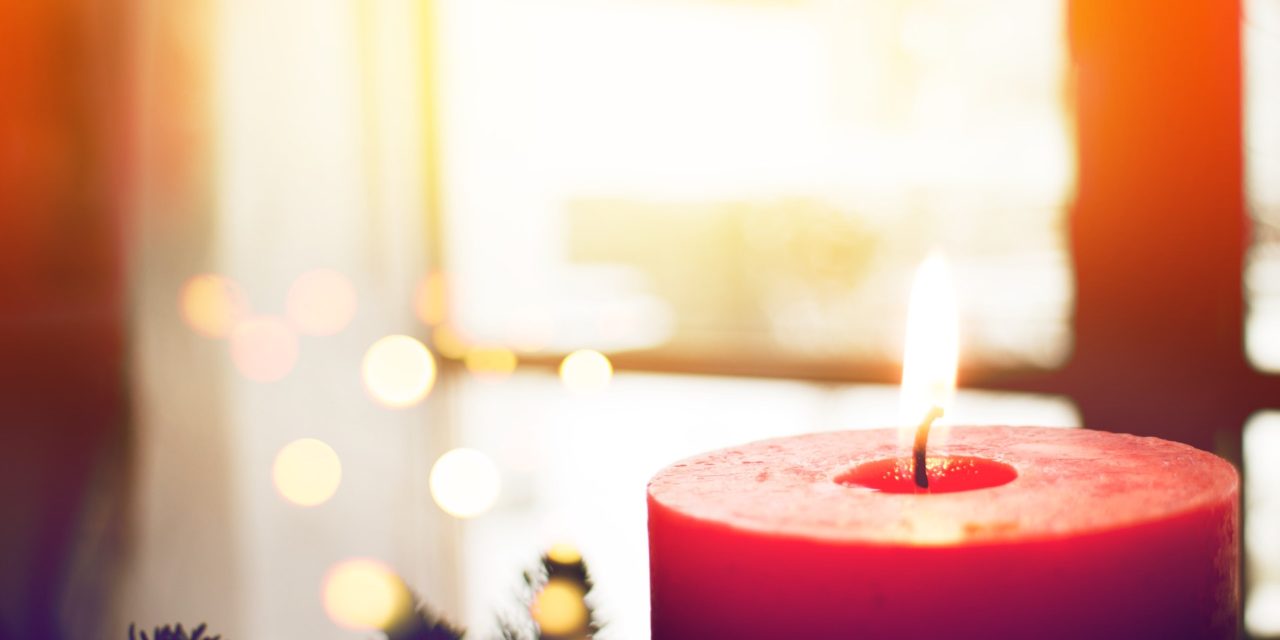This essay is comprised of excerpts from chapters one and three of Christine’s new book Digging Deeper: The Art of Contemplative Gardening.
I didn’t plan to become a creator of contemplative gardens. In fact, it was the last thing on my mind that Advent day about ten years ago when I got bored with traditional Advent wreaths and decided to abandon them. I love Advent but wanted something uniquely me through which to express my joy in the Advent season. I am a passionate gardener and over the winter when I am reluctant to venture out into the cold, wet garden around my house, miniature indoor gardens seemed like a perfect solution. I pulled out a bowl, gathered some succulents and some red candles, then grabbed a few small rocks on which to write my weekly themes. It was a transformational experience that carried my delight in the Advent season to a new level.
I enjoyed that first Advent garden so much that the next year I created another one, this time with a little more imagination and creative design, and soon my Advent garden became a yearly ritual. I found, however, that when Advent ended I didn’t want to give up my garden. It became an important part of my morning contemplative practice that provided both a focus for my eyes and for the reflections of my heart. So I converted it into a Christmas garden by replacing the red candles with white ones. That gave me another twelve days to enjoy it.
At the end of Christmas, I reluctantly dismantled it, but my eyes kept drifting longingly towards that bowl and I thought, Why stop with Advent and Christmas? There are lots of other seasons of the year for which I can create gardens. Soon a Lenten garden took shape followed by an Easter garden and others that grew out of the inspiration of summer, autumn, and Thanksgiving.
Contemplative gardens began as a way to create markers to help me enter into the liturgical calendar, but they increasingly became a way of life for me, providing a new technique for stirring my creativity, ordering my life, and deepening my spirituality. Sometimes my creations are inspired by the changing seasons of the liturgical calendar; at others, they grow out of the life situations that tug at my heartstrings either with joy or with sorrow. They increasingly give me joy and peace both in their creation and in their use, calling me to listen to the promptings of the Spirit both within me and in the world around me.
Surprisingly, when I went looking for help in creating my gardens there seemed to be very little to guide me. There are lots of fun miniature gardens displayed on Pinterest, many of them with fairies or tiny houses as their focus. However, few of them have religious significance. The only help I received was from zen gardens, but to be honest, a bowl of sand with a few rocks and a small rake to weave a pattern in the sand didn’t appeal to me. It seemed rather sterile. So, I reached within myself for inspiration from my own imagination and the creativity of the Holy Spirit.
In my book, I draw together a number of reflections on the gardens I created over the last ten years. Some of these are like windows that look out over God’s garden, enticing me with a panoramic view of the delight that God holds out to me when I turn my eyes and ears towards the stories that creation wants to teach me. Others remind me of a garden gate. They invite me to enter in and interact with the garden on a personal level. And in the process I find myself being drawn into the intimacy of a close relationship with God.
My gardens bring me joy and also healing. Sometimes they are bathed in sunlight and at other times in tears. As we entered 2022, I noticed that everywhere I turned people were talking about grief and the work that needed to be done to enable us to establish a “new normal” in the reality that confronted us. At that time I was reading The Wild Edge of Sorrow and was struck by Francis Weller’s reminder that grief is sacred and that it calls us back to deeper ground, to the roots of our life. If we treat it with reverence, recognizing the important work it yields, it becomes a place of learning and strengthening and renewal.
My first garden created intentionally for contemplation was an Advent garden. It looked a little like an Advent wreath misplaced in a bowl of plants. Four red candles because I could not find a pink one small enough and a few succulents that by Christmas were sadly splattered with wax. Even my marker stones looked a little sad—rough stones pulled straight out of the garden and not even properly cleaned because I was so impatient to paint them.
I think that impatience is one of the hallmarks of Advent. We are impatient to get beyond the waiting stage to the real event—to Christmas. And yet, without the waiting of Advent, Christmas is greatly diminished.
So, each morning I lit the appropriate candles and sat quietly for a few minutes immersed in my newly created world, trying to curb that impatience as I soaked in the meaning of the season in a way I never had before. Sometimes I was mesmerized by the flickering candles, at others transfixed by the unique pattern of each succulent. On other occasions, I picked up my rocks and rubbed their rough but still inviting surfaces in my hand. Love, joy, peace, hope—the longings of the Advent season, so precious yet seemingly unattainable, brought close for an instant in the midst of my contemplation.
This first garden was a revelation for me. Beginnings are often like that. They are unexpected, they are messy, and they hold only glimmers of what is to come. But hidden in that mess there is something that shatters our world forever.
The birth of Jesus was an even more unexpected and earth-shattering beginning and it too was messy. I can guarantee that the animals that surrounded him were not house trained. The pungent aroma of dung would have pervaded the manger where Jesus was born. And there would have been the chaos that always surrounds a home birth—Mary’s cries interspersed with encouragement from the midwife and excited family members. Then the baby was born—fully God, fully human, but his potential not yet fully realized. Like any child, he needed to grow into all that God intended him to be. But he began with baby steps.
My first Advent garden was a little like taking baby steps, too. It was a foreshadowing of the gardens that were to come, yet it transformed my practice of Advent—and indeed, of all seasons—forever. It made me realize that I don’t need to use the traditional symbols for the celebration of a season. In fact, my enjoyment of the season and my ability to enter more fully into its meaning and purpose deepened as I stepped outside the box and allowed myself to go with the flow of the Spirit and be creative.
Many years ago when I was a fledgling writer, I asked author Phillip Yancey for advice on my writing. “Write to your passion,” he advised. His suggestion never led me astray. I give the same advice about spiritual practices: “Pray from your passion” and my passion very definitely is contemplative gardens.
Praying through my gardens was a spiritual practice with no prescribed boundaries and had the beauty of being both fluid and flexible. I appreciated the freedom to continue modifying my practice that met the needs of the moment as I lit candles, sat mesmerized by my succulents, or rubbed my painted rocks.
All this helped keep my mind active, listening, and learning. It encouraged me to always be on the lookout for something new that God wanted to point out. I was invited into a deeper relationship with my creator God who also has no boundaries or limits.
I encourage you, too, to think outside the box. Don’t settle for the same old prayers and spiritual practices—design something that responds to your special needs for a particular season. You might find it as transforming as I did.
Cover photo credit: Lukas Langrock

